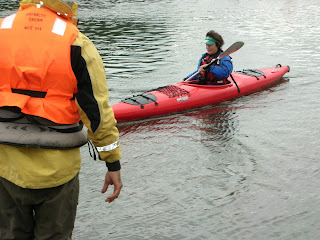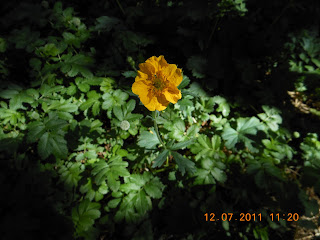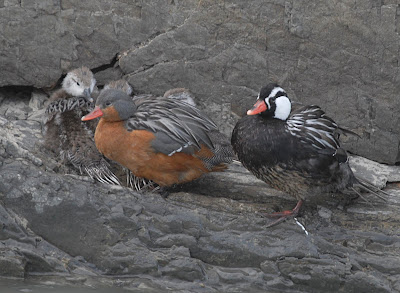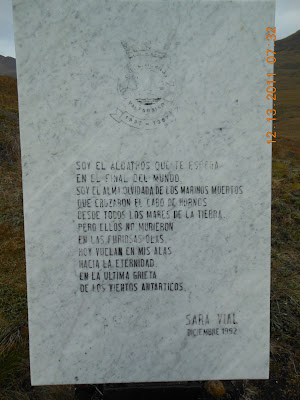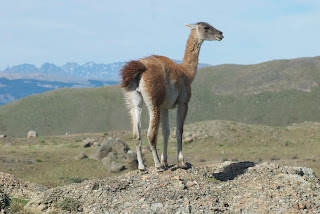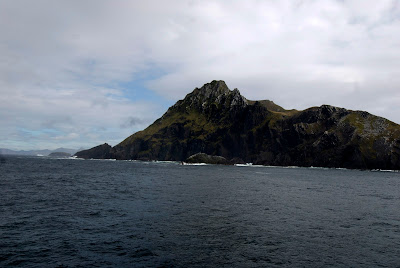If you look at the time stamp on the last posted photo, you'll note that it was taken at 8:30AM. Our day, which had been packed with adventures to this point, had barely begun! We returned to the boat, had a proper breakfast, and prepared for the actual crossing of Cape Horn, for which we had been cleared by the crew. There was a stiff wind blowing and the seas were enthusiastically, but not dangerously, high. We were going for it! At about 11:30AM, we actually crossed Cape Horn, the nemesis of so many mariners before us. The
Stella made the crossing without incident.
We had one more disembarkation to be done, in Wulaia Bay. Here is the earlier map:
Most of the passengers would be doing a walking tour of the settlement in this area. Eight of us, however had enthusiastically signed up for a kayaking trip around several islands in the bay. After lunch, Ivan and I donned our wetsuits and kayak jackets and Carolyn obligingly took our photo:

Pretty pitiful-looking kayakers, if you ask me! So, we put on our life jackets and went to the zodiacs. I thought I overheard several of the passengers muttering about how loony it seemed to be in a kayak in these waters! We would not be deterred! Wulaia Bay is a lovely sheltered bay, relatively shallow, and, for our trip, the tides were in-between coming in and going out. This meant we would probably not be lost at sea in a kayak! Ivan and I thought we were going to be in a double, but, at the last minute, a man signed his two sons up, one of whom had never been in a kayak! Ergo, the solitary double went to the young boy and one of the guides. It's been awhile since I was in a solitary kayak - and that time I was in a sea kayak with a functioning rudder! - so the track of my little kayak looked like Magellan's track as he attempted to round Cape Horn! First I went to the right, then the left, then straight for awhile, then left again, etc. I think I covered nearly twice the distance as the others did. We saw some tiny octopuses in the kelp beds and, on the way back to shore, I spotted an Andean Condor, a bird which most of the travelers had not yet seen. It was doing that Condor thing of circling very high in the sky, but, seen with binoculars, clearly had the white ruff around its neck. Truly an exciting bird to see! Anyway, here is a photo Ivan took of me as we concluded our kayaking in Wulaia Bay:
